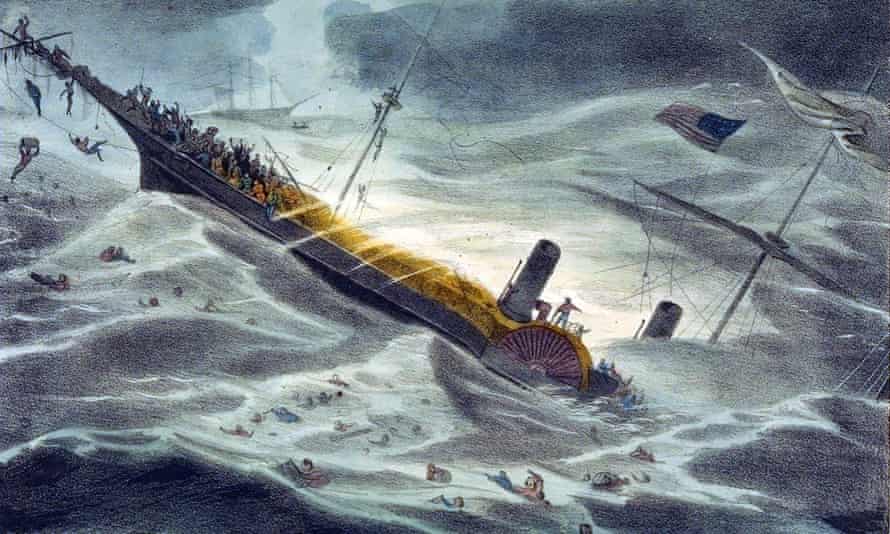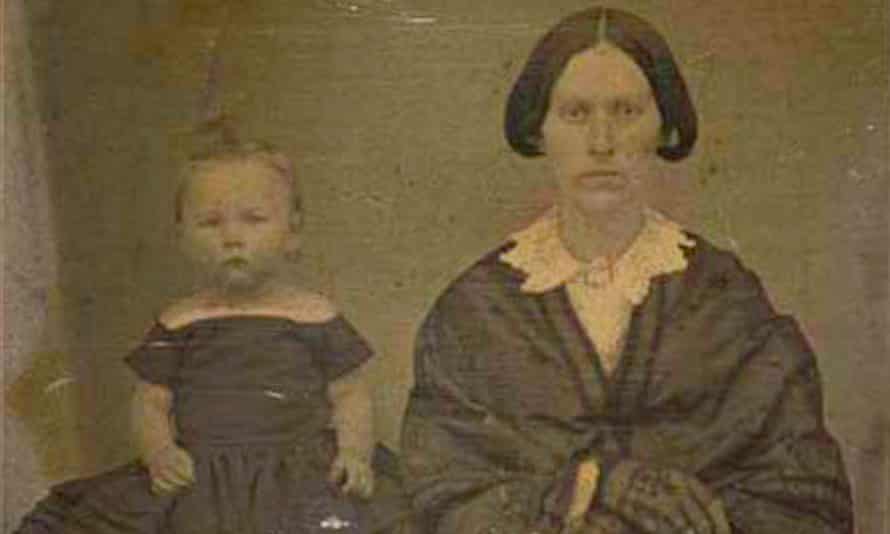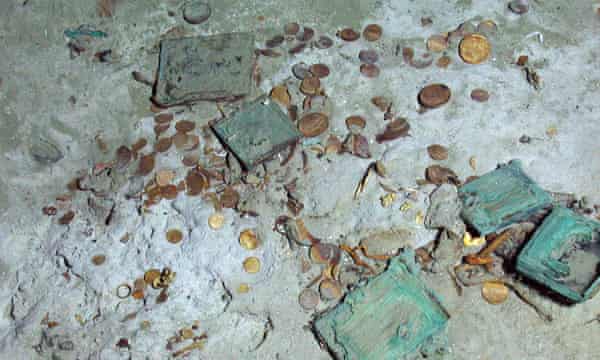It is one of the most famous treasure wrecks ever discovered, a steamer named the “ship of gold” after it sank in 1857 off the coast of South Carolina with one of the largest cargoes of gold ever lost at sea. Miners who had struck it rich in the California gold rush were among those bringing home to New York their hard-earned wealth, only to lose their lives when the SS Central America was struck by a hurricane, sinking nearly a mile and a half beneath the waves.
When nuggets, ingots and coins were recovered from the seabed in various expeditions between 1988 and 2014, the world was dazzled. But, with reported values of tens of millions of pounds, it sparked a complex legal case that landed its original treasure-hunter in jail.

Now Dr Sean Kingsley, a British maritime archaeologist, is focusing attention on another facet of the recovered artefacts: an astonishing collection of 19th-century portraits that somehow survived at the bottom of the Atlantic.
He told the Observer: “Glass plate photos had preserved the faces of miners, merchants and their families, staring up at the living from the seabed.”
The portraits are eerie, but beautiful. These were the loved ones of those who had been on a ship that sank 150 miles from the Carolina coast with the loss of 425 lives. A judge and a comedian were among the passengers.
Kingsley said: “There are two ships with iconic names. Titanic is known as the ‘ship of dreams’. This is known as the ‘ship of gold’. For me, the gold is a distraction. The glass plates are the true star treasures from this wreck. There’s dozens more down there that I hope one day will be saved too.”
When the hurricane hit, those on board dumped their bags, unable to save their prized possessions as well as their lives. As the steamer sank, the bags floated down. The leather and canvas decomposed, while gold coins and clusters of daguerreotypes and ambrotypes with dozens of individual photographs were scattered across the seabed.
Bob Evans has been researching the SS Central America since 1983 and he was the chief scientist and historian in the original field operation. He spoke of the excitement of recovering the photographs: “It’s over the top. They really bring forth the humanity of the event. We don’t know who these people in the photographs are. These were the last things these men had with them on the deck before the ship sank – and what a moment. These were the things that were most important to them, their money and these images. They represented friends or relatives or maybe even themselves.”

He added: “When you look at the actual faces of people, it takes you right there. You are looking at folks who lived it – and they’re just like us, although the clothing and fashions have changed.”
He pointed to a photograph of a young woman whose beauty captivated the men who recovered it: “She’s the Mona Lisa of the depths. This beautiful 18-year-old person, or however old she is, with her shoulders bare with jewellery and lace. It brings it across in a way that a coin does not. Coins have messages as well. But they’re harder to interpret, more intellectual and perhaps less visceral.”
The photographs appear in the latest issue of Wreckwatch, the magazine that Kingsley edits.
He said: “This is the largest cache of early photographs found at sea – and unpublished until now. It’s a once-in-a-lifetime experience to actually see faces from the deep.”

Part of the delay in being able to publish the material has been due to the legal complexities surrounding the vessel. In 1988, in an expedition orchestrated by research scientist Tommy Thompson, the wreck was discovered by the Columbus-America Discovery Group, which conducted a scientific study of the marine life there, as well as recovering gold.
Thompson has spent six years in prison, claiming not to know the whereabouts of part of that haul, to the fury of his former investors who helped raise millions for the expedition. They never saw any proceeds and finally sued.
As the Guardian reported in 2020, he refused to cooperate with the authorities trying to find the treasure, and the judge found him in contempt, while he claims to have a rare syndrome affecting short-term memory.
In 2014, Odyssey Marine Exploration was contracted by the original investors to return to the ship, recovering the photographs, jewellery and more gold.
In their Wreckwatch study, Kingsley and Evans write that the miners had risked everything to head to California’s gold fields in search of a better life and that the voyage home to New York “should have been their crowning glory”.
It is thought that 153 people survived the tragedy. Women and children were evacuated on the lifeboats and some of the men were rescued by other vessels.
One survivor later recalled: “A great many of the passengers were miners, having considerable sums of gold about them, the product of years of toil. But the love of gold was forgotten in the anxiety and terror of the moment and many a man unbuckled his gold-stuffed belt and flung his hard-earned treasure upon the deck, some hoping to lighten their weight, and thus more easily keep themselves afloat, while others threw it away in despair, thinking there was no use for it in the watery grave they were going to.”